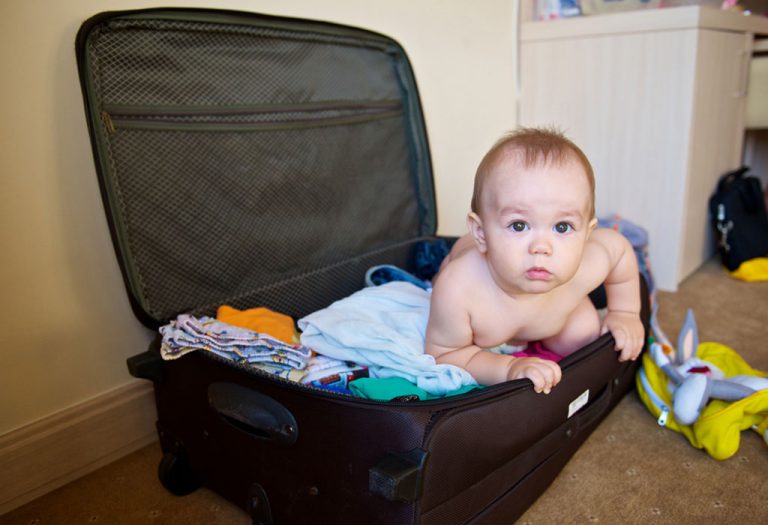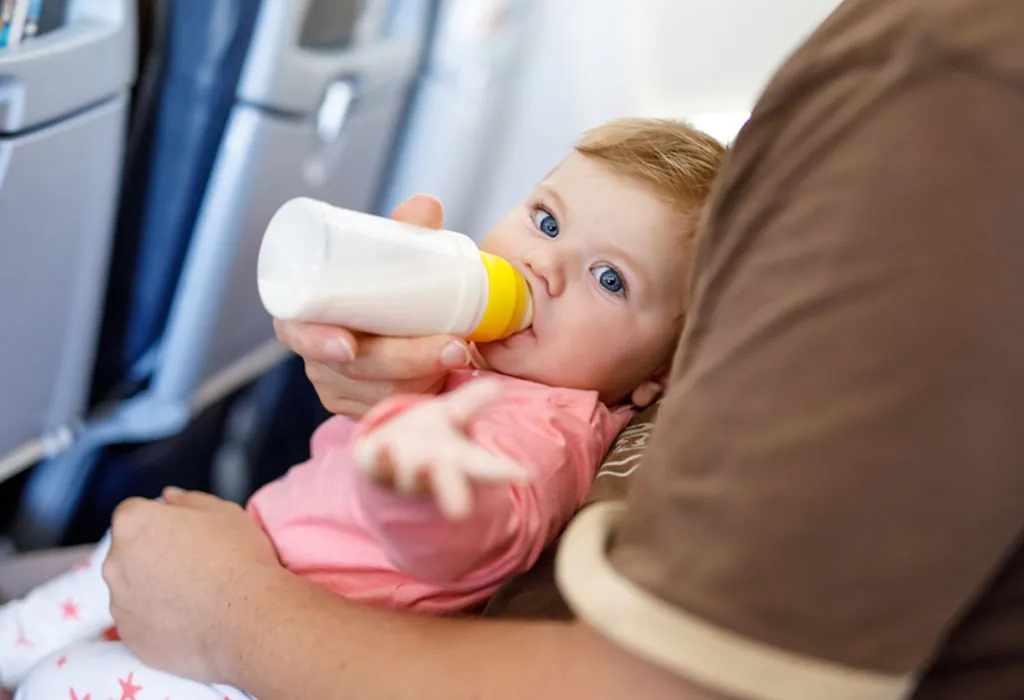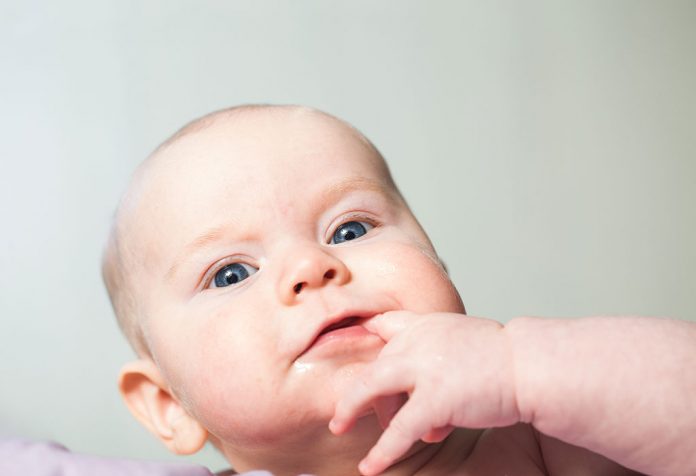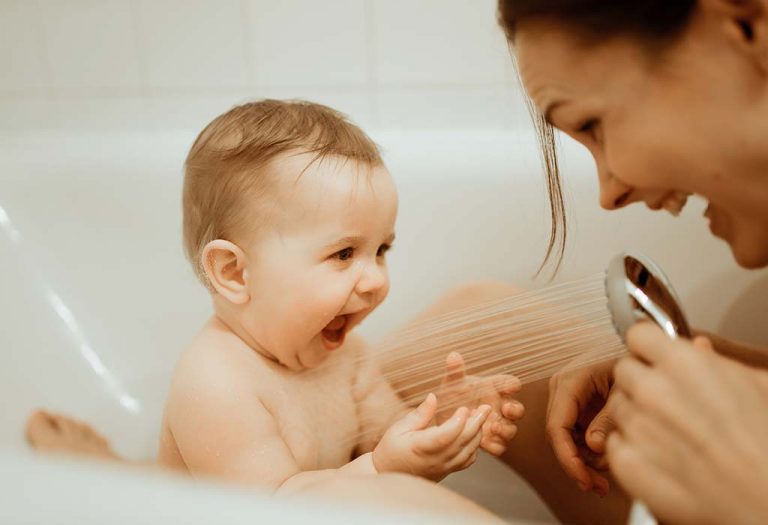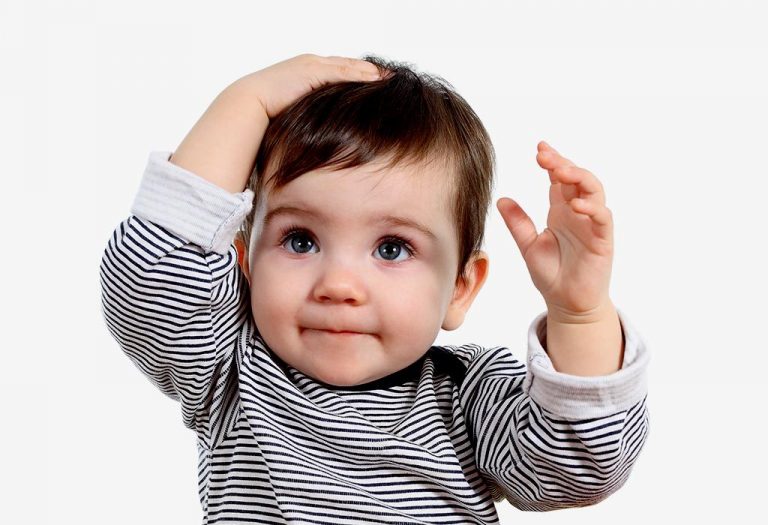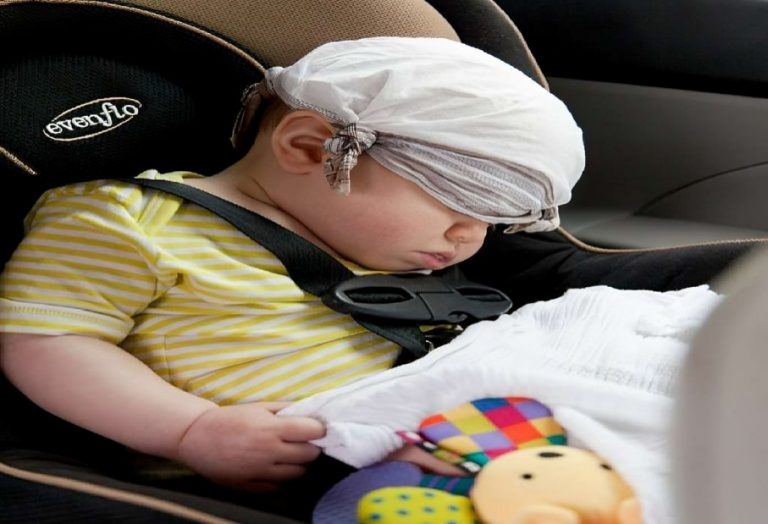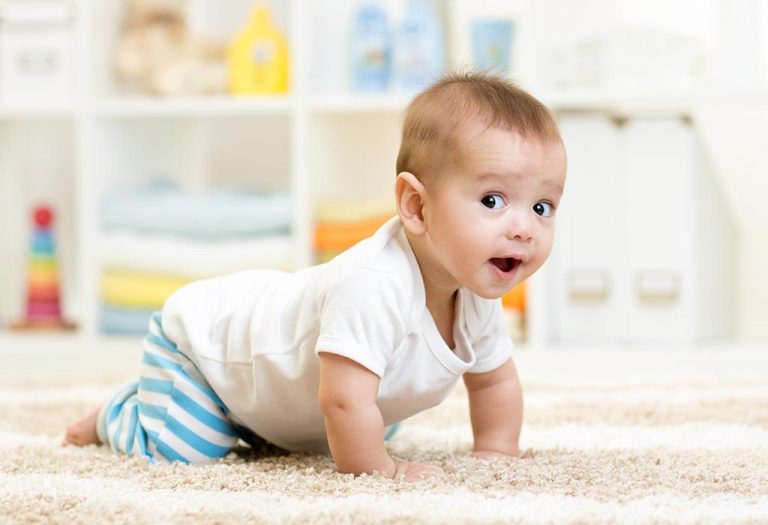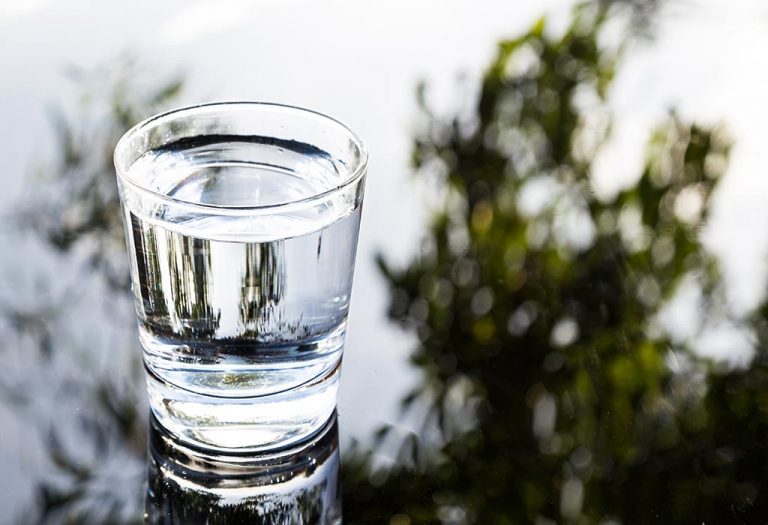Travelling With an Infant: Things You Must Not Ignore

Travelling with an infant may seem intimidating for first-time parents, but it’s possible. With proper planning and lots of preparation, new parents can enjoy a travelling experience with their little ones, allowing them to create lasting memories as a family while introducing their little ones to new sights and experiences. If you’re planning to travel with your little one soon, there are certain things you need to keep in mind. In this article, we’ll share some easy tips to make your trip smooth and fun for both of you. Read on to know how you should prepare for your first travel experience with your child.
When Can You Travel With a Baby?
Ideally, the first 40 days after childbirth are best avoided for travel. This period of confinement may extend to a few more weeks to safeguard your baby from infections and to give yourself time to recuperate from the delivery.
If travel is unavoidable during this period, you may plan a journey by train, car or bus. Air travel may not be feasible now, as some airlines have strict age restriction policies for infants and do not allow a baby on board until he is at least a month old.
Travelling when the baby is about three months old is considered safe. His delicate immune system would have developed some more resistance by then. Once the baby is six months old or older and has a fixed feeding and sleeping routine, you may be required to plan the travel around his needs (6). Interestingly, infants enjoy travelling if they are well-fed and feel secure enough. The motions and commotion can often assist them in sleeping.
How You Can Keep Your Baby Safe When Travelling?
It makes sense to follow the golden rule: Please keep it simple.
- Plan your itinerary to make it manageable for the baby.
- Avoid long spells of travel for your baby.
- Try to restrict yourself to fewer activities in a day.
- Keep your schedule flexible to accommodate your baby’s moods, sleeping and feeding timings.
- Select an infant-friendly destination and hotel so you are not required to spell out all your requirements.
The overall safety guidelines you adopt at home to ensure your baby’s safety can also be applied while travelling. In addition, here are a few tips for travelling with a baby:
- When travelling by road, keep in mind to correctly install the baby’s car seat on the rear seat rather than the front seat and adequately secure the seat belts (2).
- Place window shades or even a small towel or piece of cloth on the windows of your car to protect the child from the harsh sun. Alternatively, pack some sunscreen and a hat for the baby (5).
- It may be wise to carry a primary baby’s first aid kit with all the essential medicines to manage any probable medical issues like colic, fever, nausea, cold, cough or upset tummy. Also, it is advisable to consult your doctor, especially if your child has motion sickness. You may be required to carry the prescription of these medicines, in case you are travelling by air.
- Make your child wear a bright-coloured dress so it is easy to locate him in crowded places. You may also like to stick/clip an identity card with his basic information on his clothes in case you lose sight of him in a crowd.
How Can You Feed a Baby When Travelling?
While travelling with an infant, carrying adequate water and sufficient food may be very helpful as infants may demand it anytime and generally don’t have the patience to wait. If you travel by road, taking regular short breaks may suit the baby. If you are breastfeeding, it is most convenient, especially if you are not required to carry any gear for it.
If your infant is on baby food or formula, plan carefully. Here is what you need to feed your baby:
- It may be convenient to carry easy-to-pack, mini formula food packets.
- An insulated flask filled with boiled water and pre-sterilised travel bottles and nipples will come in handy.
- If your baby is on solids, pack some travel-sized baby cereal packs, which can be easily prepared by mixing milk or water. It is always a good idea to buy baby food in your baby’s favoured flavours so that it may relax him during travelling.
- Carrying sufficient wet wipes and enough baby bibs may also be necessary.
- Always boil drinking water rather than packaged water to prevent upset tummies.
- When travelling with an infant on the plane, feeding the baby during landing or taking off may be better to prevent any earache. Most airlines impose no restrictions on carrying adequate baby food for the trip (1).
How Can You Keep Your Baby Happy When Travelling?
Travelling with a baby can be an adventure, but keeping your little one happy is key to a successful journey. Here are some tips to help ensure your baby stays happy while travelling:
- Try to maintain your baby’s regular feeding, napping, and bedtime routines as much as possible. Familiarity and consistency can help your baby feel more comfortable and secure, even in new environments (4).
- Bring familiar comfort items, such as a favourite blanket, stuffed animal, or pacifier, to help soothe your baby during travel. These items can provide a sense of security and comfort in unfamiliar surroundings.
- Hunger and thirst can quickly lead to crankiness, so pack plenty of snacks, formula, or breast milk for your baby. Offer frequent feedings and hydration, especially during flights or long car rides, to satisfy your baby.
- Bring toys, books, or other age-appropriate entertainment to occupy your baby during travel. Interactive toys, colourful books, and soft plush toys can help keep your baby engaged and entertained while on the go.
- If you’re travelling by car, plan to take regular breaks to allow your baby to stretch, move around, and have a diaper change if needed. Even a short break can help break up the monotony of travel and provide much-needed relief for you and your baby (9).
- Dress your baby in comfortable, breathable clothing appropriate for the weather and travel conditions. Layers are vital for adjusting to temperature changes, and soft, cosy fabrics can help keep your baby comfortable throughout the journey.
- Pay attention to your baby’s cues and needs, and be prepared to address them promptly. Whether it’s a hunger cry, a tired yawn, or a need for a diaper change, promptly responding to your baby’s needs can help prevent meltdowns and keep them happy during travel.
- Travelling with a baby can be challenging, but stay calm and patient throughout the journey. Your baby can pick up on your emotions, so maintaining a positive and relaxed attitude can help keep everyone in good spirits.
What You Need to Pack for Your Baby?
When packing for your baby, it’s essential to include everything they’ll need to stay comfortable, happy, and healthy while away from home. Here’s a checklist of essentials to pack:
- Make a list of things to carry while travelling with a baby before packing. This can come in handy should you remember to pack something vital at the last minute.
- If you are travelling with a baby, carrying a foldable pram or stroller, which is lightweight and doesn’t occupy much space, may be beneficial. Otherwise, you can also opt for a baby sling or a baby carrier, which is practical as you can freely move about while sightseeing.
- If your baby is used to sleeping in his cot, you may want to take it along, for strange hotel room beds can become an issue. If it is bulky and you do not wish to carry it, take your baby’s favourite sheet or blanket instead. Familiar feelings and smells help soothe and calm the baby.
- Remember to carry the regular baby essentials like diapers, diaper rash cream, breast pads, wipes, tissues, bibs, baby’s bowl and spoons, baby soap and lotion, and so on.
- Also, carrying along a favourite toy may help engage the infant usefully. Packing a goody bag full of the child’s favourite items like toys, colours, books, and puzzles. Try to finish the travel early so that you may get suitable rest along with your baby.
Before you leave for your journey, review the “travelling with baby checklist” to ensure you have all the necessary items packed for a smooth and stress-free trip.
Other Useful Tips
Here are a few tips for travelling with a baby to ensure a smooth journey (3):
- Keep in mind to take adequate rest before starting on a journey. This will help you to remain calm and cope better with any situation.
- Ensure that your baby is taking in plenty of fluids during the trip. It is essential to keep the child suitably hydrated.
- It may be wise to book a lower berth when travelling by train. It may be convenient as it gives the baby sufficient room to move around.
- Choosing a lightweight stroller with an additional sunshade and mosquito net may be worthwhile. It may be useful if it has an adjustable back, which can be helpful if the baby wants to sleep.
- It may be helpful if you keep changing the view or scenery of the baby. Let him sit by the window or move about the train or plane to keep things new and exciting.
- You may like to carry a night light or a baby monitor, which can be plugged into unfamiliar hotel rooms. You may need to pack a plug adapter as well.
- A universal bath plug may be helpful as it can convert a shower into a bath. Otherwise, you can use the sink for bathing the baby or carry an inflatable bathtub.
- It is always a great idea to carry along some new and exciting toys that can surprise the infant if he gets bored or cranky during the journey.
- It is helpful to pack in an extra blanket or mat, which can be spread while waiting for your train or flight. This can allow the child to play freely and tire himself out so that he may later nap peacefully on the train or plane. You may also use it to change diapers if changing tables are unavailable.
- While travelling, there is just no way you can avoid the germs. So, remember to carry lots of disinfecting wipes or liquid hand sanitisers to clean the baby’s hands repeatedly.
- Always carry extra clothing not only for the baby but also for yourself. With infants, things can turn messy while feeding them, or they may throw up.
- You can coordinate sightseeing or long walks with your baby’s nap times. This way, you can move around in peace while the baby sleeps in the stroller or baby sling, and later, you can stop at a park to rest when the baby is up and needs to play about.
- It is always sensible to bear in mind the time zones when travelling abroad, as this can interfere with your child’s routine. Keep your schedule flexible to meet your child’s eating and sleeping requirements.
- While travelling, following your child’s usual routine may be challenging. So, try to quickly set a new routine for him during the trip and follow it. This may help him to feel comfortable in unfamiliar surroundings.
- Try and start early for any trip. This is because infants are in a better mood during the day. Afternoons can be reserved for outdoor activities, while evenings can be spent relaxing at the hotel.
FAQs
1. Are there any vacations or health precautions I should take before travelling with my infant?
Before travelling with a baby, it’s essential to consider both vacation plans and health precautions (7). Ensure that your destination is suitable for infants and that necessary amenities, such as baby-friendly accommodations and healthcare facilities, are available. Also, consult with your paediatrician to discuss any specific health precautions recommended for travel to certain destinations.
2. Do infants need a passport to travel internationally?
Yes, infants need a passport to travel internationally, just like adults (10). You’ll need to apply for a visa for your infant, which may require proof of citizenship, parental consent, and a passport photo. It’s essential to check the passport requirements of both your home country and the destination country well before your trip to ensure you have all the necessary documentation (8).
3. What should I do if my infant becomes fussy or uncomfortable during travel?
If your infant becomes fussy or uncomfortable during travel, try soothing them by offering a pacifier, breastfeeding or bottle-feeding, providing comfort items like a favourite toy or blanket. Taking breaks for diaper changes and stretching can also help alleviate fussiness.
Travelling with an infant may not be as convenient as travelling alone, but it can still be a wonderful experience. Consider taking a trial trip before planning a long journey with your infant, like a day’s outing, picnic, or weekend trip, to gauge his reaction and get an idea about how travelling with him will be.
Knowing the secrets of how to travel with a baby transforms daunting journeys into memorable adventures filled with laughter and precious moments. As your child gets used to the nuances of travelling, you can take frequent trips together and make beautiful, everlasting memories in the bargain.
References/Resources:
1. McCarthy. C, Shu. J; Flying with Baby: Parent FAQs; American Academy of Pediatrics; https://www.healthychildren.org/English/safety-prevention/on-the-go/Pages/Flying-with-Baby.aspx
2. DiMaggio. D; Is it safe for my baby to travel in a car seat for hours at a time?; American Academy of Pediatrics; https://www.healthychildren.org/English/tips-tools/ask-the-pediatrician/Pages/Is-it-safe-for-my-baby-to-travel-in-a-car-seat-a-few-hours-at-a-time.aspx
3. Tips for Safe & Stress-Free Family Travel; American Academy of Pediatrics; https://www.healthychildren.org/English/safety-prevention/on-the-go/Pages/Travel-Safety-Tips.aspx
4. The Importance of Schedules and Routines; Head Start Early Childhood Learning & Knowledge Center; https://eclkc.ohs.acf.hhs.gov/about-us/article/importance-schedules-routines
5. Baby and toddler travel: what you need to know before going ahead; National Childbirth Trust; https://www.nct.org.uk/baby-toddler/getting-out-about-your-baby/going-holiday/baby-and-toddler-travel-what-you-need-know-going-ahead
6. Tips for Traveling with Young Ones this Holiday Season; American Academy of Pediatrics; https://www.aap.org/en/news-room/news-releases/health–safety-tips/american-academy-of-pediatrics-tips-for-traveling-with-young-ones-this-holiday-season/
7. Weinberg. M, Weinberg. N, Maloney. S; Traveling Safely with Infants & Children; Centers for Disease Control and Prevention; https://wwwnc.cdc.gov/travel/yellowbook/2024/family/infants-and-children
8. Children- Travel Documents for infants; U.S. Customs and Border Protection; https://help.cbp.gov/s/article/Article-724?language=en_US
9. Driving with your baby or toddler long distance: tips for road trips; National Childbirth Trust; https://www.nct.org.uk/baby-toddler/winter-your-baby/driving-your-baby-or-toddler-long-distance-tips-for-road-trips
10. Holidays with a baby: your guide; National Childbirth Trust; https://www.nct.org.uk/baby-toddler/getting-out-about-your-baby/going-holiday/holidays-baby-your-guide
Also Read:
Best Places to Travel with Infant
Tips to Select a Baby Friendly Hotel
Baby Travel Essentials Checklist
Baby & Toddler Foods to Carry While Travelling
Things You Need if You’re Travelling With a Baby
Was This Article Helpful?
Parenting is a huge responsibility, for you as a caregiver, but also for us as a parenting content platform. We understand that and take our responsibility of creating credible content seriously. FirstCry Parenting articles are written and published only after extensive research using factually sound references to deliver quality content that is accurate, validated by experts, and completely reliable. To understand how we go about creating content that is credible, read our editorial policy here.






